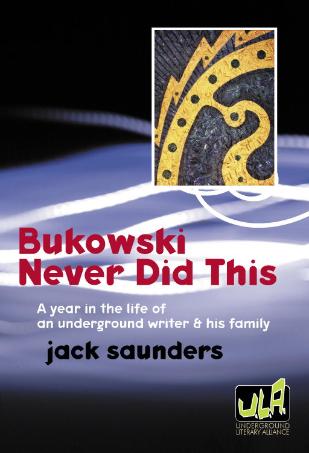Since I promote and produce indie media, lifestyle & craft stuff, my projects intersect with the hipster world.
A couple years ago our pre-teen kids first heard me saying the word hipster and got angry. There’s no such thing! Today they admit I was right. I suppose it was because hipster relates to cool youth and parents by definition are ancient and out of touch. Martha was skeptical, too, but then she didn’t believe there was such a thing as “chick lit”.
I remember when I saw my first hipsters riding bikes out in the country near our house. They were on fixies and wearing tight jeans. How did they get here? What were they doing? It’s funny how they seemed out of place, like they were lost.
Yeah, hipsters look a certain way and do certain things. Read all about it at the links below…
I recently came across these reports on hipsterism and its various intersections. It seems like all of them are worth mulling over, whether you’re a guilty party or only encounter such a demographic on occasion. (If I’m way behind hipster explaining, post some better links in the Comments!)
The first link goes to a NYT article that suggested hipsters were the first radical counterculture group that had no politics or interest in race (other than their own whiteness) and who were ardent consumers, who believed it was radical to shop from certain large corporations. But there are many other traits as well. These traits intersect in a few places with those who advocate an active lifestyle with plenty of fresh air and with those who are involved in the indie arts.
According to the NYT story below, hipsters first came around way back when, like in the 40’s or 50’s when some white urban folk started hanging out with black people. The Kerouac Jazz period. They were hep-cats. Hip. I’m hip. After that the scene drifted away from black jazz into its own thing. Lightweight, youth in San Francisco who wanted to be connected and “down” and “beat” while still being supported by their parents were called hippies by the old-timers, as a put-down. But now hipsters are back, only with no pretension of being “beat”.
For instance, the Stuff White People Like blog “full list of stuff” suggests (somewhere) that collecting nifty indie craftwork has replaced the role of fine art for hipsters. If looks are everything and you don’t have much money, then a quirky gew-gaw on your wall functions as well as art which has paid its dues, however that may happen.
To me there’s also a cynicism related to hipsterism that’s reflected in an emptiness of content and an emphasis on appearance in at least some of today’s art and literature.
In the 70’s I was just a kid. So I’m young for the hippies, but old for Gen X and the slackers — part of a tweener generation. But back in the 60’s and 70’s “rapping” was a big deal — and not a kind of ghetto music. People would sit around (and sometimes get high) listening to quiet music, even, and try to talk about important things, try to sort things out. There were slang lingo phrases relating to it that had meaning. If a new singer was on the scene, people asked “Does he have anything to say?” Meaning, were the lyrics relevant. (That came up in the Dylan documentary.) Meaning wasn’t passe’. Content was king. Today it seems like substance is embarrassing, gauche. Style is everything. (And parties are about noise. I mean, beats. At maximum decibel. Talking? Thinking? C’mon!) Of course there are only ever attempts and efforts at finding things out, pushes in a direction, with no real answers. The journey is the thing. But today even the process is out of style. People of the 70’s used art and literature as meaningful guides in their attempts to live life. …Not as style indicators. Sure, they were misled, derailed and exploited as often as not, but relevance, discovery, meaning, content were the goals. Ironic cleverness hadn’t reared up yet.
The ULA literary activism group I was a part of in the Early Oughts noisily, hilariously, and productively reasserted the primacy of writing about life, from life — as per the zine revolution of the 90’s that created OYB — and in contrast to the careerist stylings that came from the rigidly out of touch art-factories of academia. Our work, protests, and website are still readily available, with $5 novels at: ulapress.com and many exposes’ at literaryrevolution.
The resurgence of bicycling seems related to both ends of the spectrum. People are riding bikes to get more real liberation in their lives — liberation from cars, expense, illness, closed-in spaces — and better connections to their neighbors, friends, fellow road-users, neighborhoods, and travels. But bikes are also part of the hipster world. I think they’re one of the solid parts of the hipster contribution, a contact point with the earth. But hipsters use bikes ironically as well. …And both ways at the same time. An ironic bike can still put a glow on your cheek and get you from town to town for a few pennies. Bikes are a neat point to look at in cultural studies today. I’ve posted other links here that show various takes on this, such as the YouTube videos by MC Spandex (“Performance” and “Get Dirty” … www.youtube.com/watch?v=Vn29DvMITu4 … www.youtube.com/watch?v=ru2Dpe1LkNU)
Anyway, check out these links, if you haven’t seen them already:
*What was the Hipster? nymag.com/news/features/69129/
*Stuff White People Like stuffwhitepeoplelike.com/full-list-of-stuff-white-people-like/
*The Hipster in the Mirror www.nytimes.com/2010/11/14/books/review/Greif-t.html
*Are there no hipsters in China? www.slate.com/id/2250893


